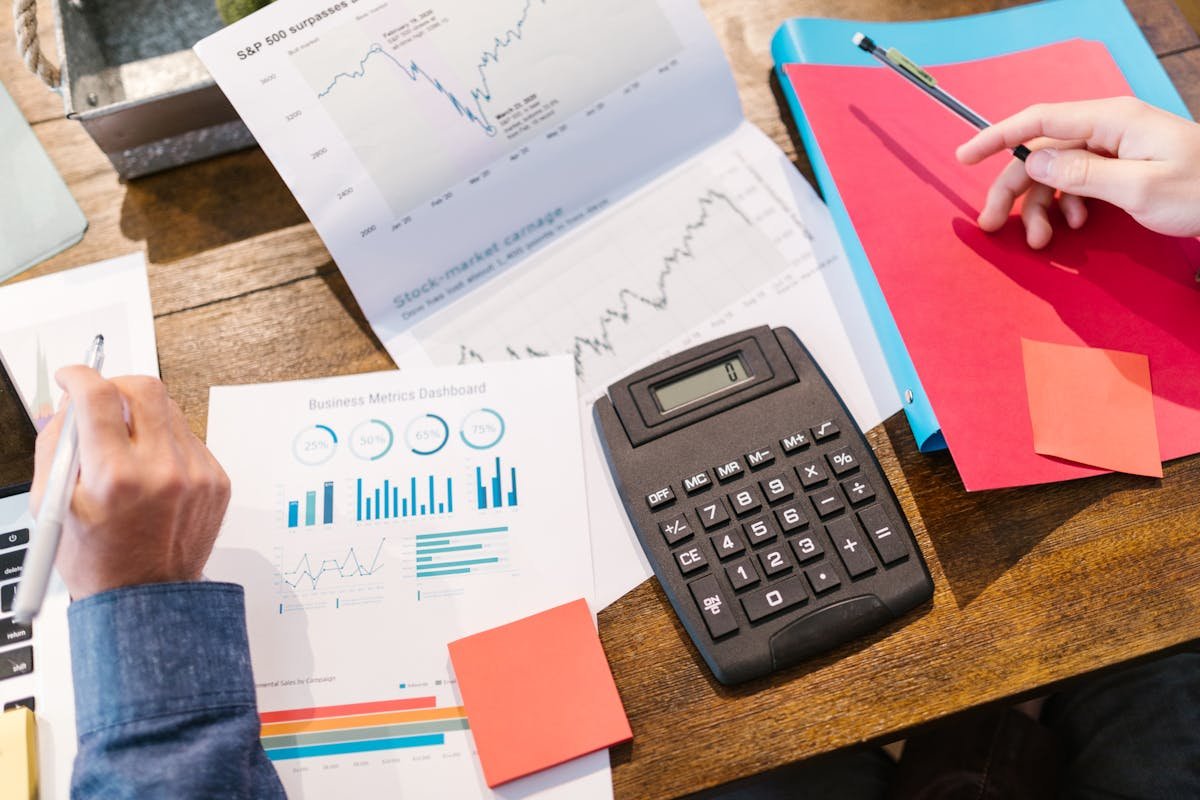Financial dashboard: what is it and why is it important?
Finance / Date: 03-30-2025

Business transformation and the high volume of data available in companies make financial management increasingly difficult. In this sense, having a financial dashboard can be the ideal solution for analyzing business finances more quickly and assertively.
This task is essential to ensure consistent results that are visually easier to analyze. This makes it possible to assess the company's financial health in real time, ensuring agility in the decision-making stages of your business.
With this in mind, this article will present what a financial dashboard is and the importance of using this tool in your company.
Continue reading and understand!
What is a dashboard?

First, it is important to understand what a dashboard is. The term can be translated as control panel or main panel, as it is a type of bulletin board or board linked to the business management system.
In this way, the tool concentrates various relevant information about the business with the aim of facilitating the visualization of various data. Thus, the dashboard gathers the system records and presents them on a single screen.
The data can show issues related to the performance of different sectors of the company. This is usually done through graphs and tables — which makes it much easier to interpret the information presented.
It is also possible to access specific points to delve deeper into the records. In addition, there are different types of dashboards, each of which fulfills a specific function, relating to a specific sector of the business.
What is the financial dashboard?
As you have seen, there are several types of dashboards that can be used by small and medium-sized companies. In the case of the financial dashboard, the panel visually presents the compilation of the main metrics and KPIs (key performance indicators) necessary to monitor the financial health of the business.
To achieve this, the system automatically collects, consolidates, analyzes and reports data from various systems and processes. Thus, it provides a single point of control for those working with financial management in companies and helps them make better decisions.
Furthermore, the dashboard allows for more complete financial analyses, through a comprehensive and unified assessment on the initial panel itself. This dynamic enables the maintenance of the health of corporate finances on a day-to-day basis.
How does the financial dashboard work?
Functionality-wise, the financial dashboard integrates many data sources to present a comprehensive and precise view of the company's financial situation. This enables the business to examine this consolidated data in real time, right on the dashboard.
In addition to simplifying financial reporting , this tool also expands the power of data analysis. This makes assessment more robust, enabling advanced forecasting, budgeting, and planning.
As a result, the solution makes business routines easier, as professionals in the area spend less time preparing data — as happens when spreadsheets are used , for example. Therefore, they can focus on identifying opportunities to reduce costs and increase profitability, for example.
How can financial dashboards be divided?
Now you know what a financial dashboard is and how it works. Although it refers to corporate finances, in general, each piece of information presented serves a purpose. That's why there are several types of financial dashboards used by companies.
They have specific functions, depending on the needs of the business. Check out some examples of financial dashboards that can be used by small and medium-sized companies:
Operational
A financial dashboard with an operational focus provides useful information to optimize process performance. Therefore, this model is used to present the metrics that need to be monitored by analysts.
This way, they can make improvements to their activities, in order to gain more agility in correcting work. Among the data that can be evaluated in these panels are:
- cash flow ;
- balance of receipts;
- balance of payments.
Other metrics relevant to the business can also be used, as long as they are related to the operational part. Thus, the system can present information on inventory, production, production capacity, among others.
Therefore, the operational dashboard is quite relevant and directly affects the tactical and strategic visions of the business. Its main characteristics are related to the company's day-to-day activities, the short term and a focus on actions. Thus, the tool helps to quickly identify critical failures, allowing for early corrections.
Tactical
It presents information so that medium-term goals can be achieved. The purpose of this dashboard, therefore, is to gather day-to-day actions and show the manager data related to:
- treasury, such as cash, projection, debt;
- customers, such as profile, average payment term, default rate ;
- suppliers, such as average payment term.
Unlike the operational tool, the tactical financial dashboard cross-references information from the system. In this way, it provides a broader view of the business processes and results. As a result, this dashboard is more complex than the operational one and has the advantage of bringing together information from different sectors.
Strategic
The strategic financial dashboard is most commonly used by management, as it assists in decision-making and defining long-term goals. The indicators displayed in this type of dashboard may include:
- profitability;
- profitability;
- gross margin;
- debt ratio;
- ROE (return on equity);
- liquidity ratios;
- between others.
This information allows management to mobilize resources to achieve different goals targeting more distant dates. In addition, the advantages of the strategic financial dashboard are the macro and complete view of health and financial sustainability.
What is the financial dashboard for?
After understanding that financial dashboards can be divided into different types, it is important to know that there are some common points between them. Therefore, before using the tool, it is necessary to understand its usefulness.
Check out some features of the financial dashboard that can be very useful for your company:
Manage cash flow quickly and accurately
When managing a business, you often need to make quick financial decisions. In these cases, having your cash flow available on your dashboard allows you to make decisions quickly and with a higher success rate.
Have an overview of the company's main expenses
With the financial dashboard, you can monitor the company's main expenses in real time. This way, you can prepare to reduce costs or make decisions that are more aligned with the company's needs.
Track your card bills in one place
Keeping track of your invoices, limits and card details can be time-consuming, especially if you use spreadsheets to manage your credit card information. That's why a financial dashboard is useful for keeping track of this information on a single screen.
Don't miss appointments
With the financial dashboard, it is easier to know which bills the company needs to pay and receive, as well as those that are overdue, through a single source of information.
Follow Us
Newsletter
Subscribe to our newsletter to stay updated with our latest news and offers.
We respect your privacy.







